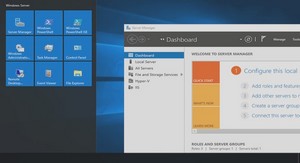…….
What Is the Distributed File System?
DFS technologies include:
• DFS Namespaces – provide a virtual view of shared folders located on different servers
• DFS Replication – provides high-availability and fault-tolerance to files and folders
• Remote Differential Compression – provides a compression technology that is optimized for data transfers over limited-bandwidth networks
The Distributed File System incorporates technologies that provide fault-tolerant access to geographically dispersed files
Namespace Server Requirements
A namespace server is:
• A domain controller or member server
• Windows Server™2003 or Windows Server°2008
Namespace server considerations:
• Must contain an NTFS volume to host the namespace
• Must be in the same domain if the namespace is domain-based
• Cannot be a clustered resource if the namespace is domain-based
Demonstration: Installing DFS
In this demonstration, you will see how to install the DFS services role
Deploying Namespaces for Publishing Content
To configure a namespace for publishing content:
Optional tasks:
Create a namespace
Add folder targets
Create a folder in the namespace
Set target priority to override referral ordering
Set the ordering method for targets in referrals
Enable client failback
Replicate folder targets using DFS-R
You may also need to delegate the ability to create and manage namespaces
Demonstration: How to Create Namespaces
In this demonstration, you will see how to:
• Create new namespaces
• Create a folder and folder target
• Delegate permissions



